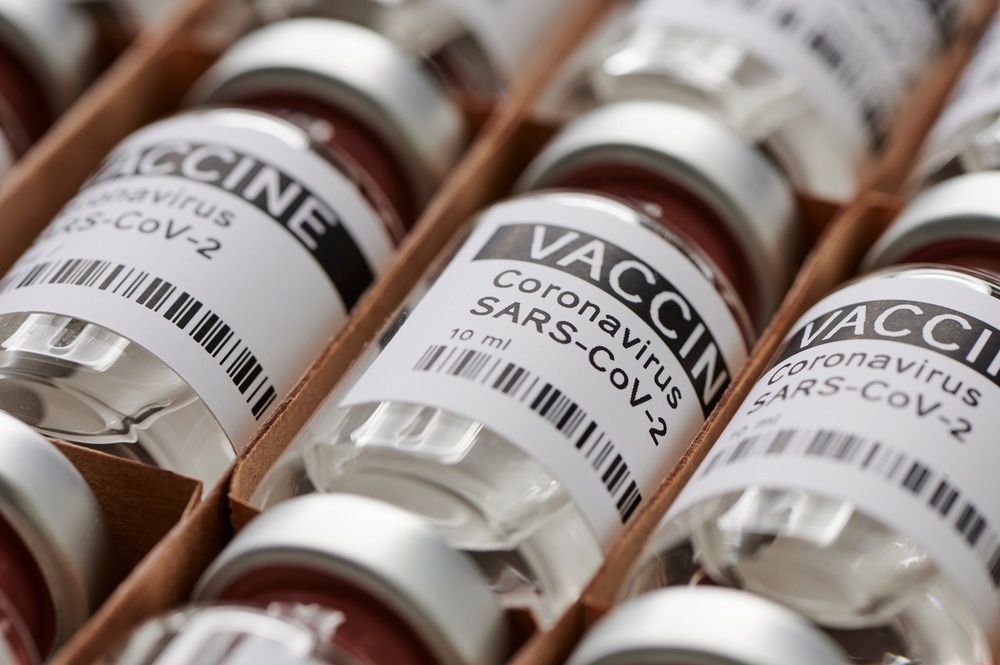In a recent report published in Vaccine, researchers presented the coronavirus vaccines research and development roadmap (CVR) to promote the development of broadly protective coronavirus disease 2019 (COVID-19) vaccines.
 Study: A Research and Development (R&D) Roadmap for Broadly Protective Coronavirus Vaccines: A Pandemic Preparedness Strategy. Image Credit: M-Foto/Shutterstock
Study: A Research and Development (R&D) Roadmap for Broadly Protective Coronavirus Vaccines: A Pandemic Preparedness Strategy. Image Credit: M-Foto/Shutterstock
Background
COVID-19 has caused unprecedented morbidity and mortality worldwide. Broadly cross-protective vaccines must be developed to protect against novel emerging severe acute respiratory syndrome coronavirus 2 (SARS-CoV-2) variants with greater transmissibility, virulence, and immune evasiveness. The vaccines would aid in mitigating the effects of COVID-19 and future viral outbreaks.
About the report
In the present report, researchers summarized key issues and highlighted research areas outlined in the CVR to develop broadly protective pan-CoV vaccines.
Vaccine development to combat COVID-19 and other pandemics
Vaccines must be quickly available for mitigating novel coronavirus (CoV) threats, which could be achieved by developing ‘prototype vaccines’ available for initial vaccine authorization and manufacturing at scale within 100 days of recognizing a pandemic threat rather than just-in-time vaccine development. Another approach involves the development of a universal and broadly effective vaccine against several CoVs, such as α-CoVs, β-CoVs, γ-CoVs, and δ-CoVs, that could be deployed rapidly.
In particular, vaccines must be effective against β-CoVs, including SARS-CoV-1,2, and Middle East respiratory syndrome-CoV (MERS-CoV). Spillover risks of the CoVs must be ascertained. A tiered approach must be followed for vaccine development, with the first tier protecting against SARS-CoV-2 variants and subvariants; the second tier protecting against several sarbecoviruses, including SARS-CoV-1 and -2’ the third tier protecting against β-CoVs, including SARS-CoV-1,2, and Middle East respiratory syndrome-CoV (MERS-CoV); and the fourth tier protecting against all CoVs and common cold-causing viruses.
Vaccines must be globally accessible equivalently to all nations, and sustained, collaborative, and coordinated multi-partner efforts of health experts must be taken to fight pandemics at the regional, national, and international levels. Global investments are required by funders, researchers, regulators, population health policy-makers, industrial representatives, and non-governmental organizations.
CVR sections, goals, and milestones
The CVR has 5.0 sections, including virology, immunology and immunological correlates of protection (CoP), vaccinology, human and animal research models, and financing and policies. The milestones follow the SMART (specific, measurable, achievable, relevant/realistic, and time-sensitive) format. Studies must be performed to improve the characterization of CoV diversity among animals and improve understanding of the viral diversity, geographical distribution, host species range, prevalence, and risk of spillovers of viruses.
Viral genomic sequencing data must be standardized, open, and accessible to share real-time antigenic and genomic data. Research campaigns must be encouraged to identify CoVs derived from bats and other animals. The sampling of captive and wild animals must be increased to select viruses appropriate for vaccine research and evaluate the breadth of protection. Initial panels of viral stocks must be generated and accessible to CoV researchers. Serological platforms must be developed to conduct serological surveillance analyses among high-risk individuals and identify viruses with spillover potential.
Studies must be performed to better characterize mucosal and systemic immunity and innate and adaptive immunological responses to CoVs by various tissues. Factors influencing the breadth of protection, such as conserved B-lymphocyte and T-lymphocyte epitopes, must be identified, and receptor-mediated antibody effector functions must be assessed.
The durability of immunological responses must be enhanced, pre-existing immunity levels against CoVs must be assessed, and CoPs must be identified based on viral antigens, vaccine candidates, clinical disease outcomes such as preventing severe illness, and routes of vaccine administration.
Immunological assays must be standardized, harmonized, feasible, and reproducible. Mechanisms underlying broad immune protection against CoVs must be elucidated, and the effects of pre-existing immunity levels on antigenic superiority and recall responses must be evaluated. A centralized database must be created, including all CoPs for COVID-19 vaccines. Minimally acceptable target product profiles (TPPs) and sets of preferred product characteristics (PPCs) are required.
Efforts to formulate next-generation vaccines comprising live-attenuated viruses, whole inactivated viruses, viral vectors, recombinant glycoprotein subunits, peptides, virus-like particles, nanoparticles vaccines, and nucleic acids such as deoxyribonucleic acid (DNA) or ribonucleic acid (RNA) could reduce the global burden of COVID-19, and other CoV infections. Heterologous prime-boost regimens, chimeric spike vaccines, multiplexed/mosaic nanoparticle vaccines, and SARS-CoV-2 spike receptor-binding domain nanoparticle vaccines could induce cross-protective, Fc receptor (FcR)-mediated immune responses against circulating viruses and pre-emergent viruses.
New technologies and approaches must be used to develop broadly protective vaccines and identify adjuvants that can enhance vaccine efficacy. Principles must be defined to down-select vaccine candidates for further analyses, and harmonized clinical endpoints must be used to facilitate vaccine comparisons and develop scalable, usable, and cost-effective vaccines.
Validated and standardized animal models recapitulating clinical features of CoV infections must be available, and the controlled human infection model (CHIM) must be optimized for vaccine assessments. Using standardized parameters and regulatory harmonization, best practices must be developed for CHIM research.
Conclusion
Based on the report findings, sustained, collaborated, and multinational efforts and financial investments are required to develop broadly effective, durable, scalable, and cost-effective CoV vaccines, with equivalent access to all nations, to improve global preparedness and public health.